Ijraset Journal For Research in Applied Science and Engineering Technology
- Home / Ijraset
- On This Page
- Abstract
- Introduction
- Conclusion
- References
- Copyright
A Study on Evaluation and Comparison of Various Properties of Ordinary Portland Cement with Bacterial Concrete
Authors: Abhishek Kumar, Aadil Manzoor , Angad Preet
DOI Link: https://doi.org/10.22214/ijraset.2025.67168
Certificate: View Certificate
Abstract
Bacterial Concrete, also widely known as Self-Healing Concrete (SHC) in practical field , is an advanced material that uses microorganisms capable of precipitating calcium carbonate (CaCO?) to heal cracks in concrete structures. This study discovers the key features, types, advancements, and comparative performance of SHC against Ordinary Portland Cement (OPC). Author finds Bacterial concrete enhances durability, reducing permeability, and improves mechanical properties, making it a sustainable alternative to conventional concrete. The methodology used by resercher involved testing cement properties of opc and SHC, including water absorption, slump value, flexural strength, compressive strength, split tensile strength, and setting times. Etc . Experimental results indicate that SHC has superior properties compared to OPC. We also finds Water absorption is lower (3.44% and 3.79%) , indicating better durability. SHC exhibits improved workability with a higher slump value (65 mm and 56 mm) for opc and bacterial concrete . after test results we concluded Flexural strength is significantly higher showing enhanced resistance to bending forces. Advancements in SHC include nano-encapsulation techniques for controlled bacterial activation, integration with AI and IoT sensors for early crack detection, and application in 3D printing for self-repairing structures. Are also discussed in this paper by writers . The research highlights that combining SHC with geopolymer concrete and fly ash further enhances its performance. Authors also pointed that While cost and large-scale implementation remain challenges, ongoing researches should aims to optimize bacterial longevity and cost efficiency, positioning bacterial concrete as a practical replacement for conventional cement in the future.
Introduction
I. INTRODUCTION
Bacterial Concrete, better known as self-healing concrete [SHC], is an pioneering material that integrates microorganisms accomplished of precipitating calcium carbonate (CaCO?) to heal cracks in concrete structures. Author finds that It is designed to enhance the durability, sustainability, and lifespan of conventional concrete by reducing crack propagation etc . After analysing we find that The concept of bacterial concrete is based on biomineralization, where bacteria such as Bacillus subtilis or Sporosarcina pasteurii produce calcium carbonate as a byproduct. This reaction fills micro-cracks, preventing further degradation of the structure.[1-2]
A. Key Features of Bacterial Concrete
It is inconporated with Self-Healing Ability It Can repair cracks, also extends concrete lifespan and durability. After test performed we find it Eco-Friendly as it Reduces the need for repairs and minimizes CO? emissions from cement production. Bacterial concrete also Enhances Durability by Improving resistance to water permeability, corrosion, and severe environmental conditions.During test we find that it has Better Compressive & Tensile Strength and improved mechanical properties compared to Ordinary Portland Cement (OPC).[3-5]
B. Types of Bacterial Concrete
The different types of Bacterial concrete in the civil engineering as follow
After studying litreture we concluded that Intrinsic Self-Healing Concrete has Bacteria and nutrients are mixed directly into the concrete mix. Whereas Self-healing occurs naturally when cracks expose bacteria to moisture and air. The second type of self healing concrete is Encapsulated Bacterial Concrete in which Bacteria and nutrients are surrounded in capsules or microcapsules.Whenever there is a cracks formation capsules will break discharging bacteria to heal the damage in the structure. Another type of concrete in whch Bacterial solution is sprayed onto cracked concrete. Is maily known as Surface-Applied Bacterial Concrete. it is Useful for repairing existing structures and preventing further damage mainly repair and maintenance works . after various studies evaluated we came on conclusion that it is very benificial to use self healing concrete over opc due to various advantages and advancements discussed below.[6-7]
C. Advancements in Bacterial Concrete
Research and studies has showed improved longevity in concrete, ensuring longer self-healing capabilities. Bacillus megaterium and Sporosarcina pasteurii have shown higher efficiency in calcium carbonate production. It has various advantages in Nano-encapsulation techniques used to protect bacteria from early activation In the field of nanotechnology we concluded Silica-based and polymer-based capsules allow controlled bacterial release when cracks form in the concrete. It has various advancements in the it sector as well primarily ai advancement techniques as IoT sensors fixed in bacterial concrete detect microcracks before they become visible.Bacterial concrete is being integrated into 3D printing as well for rapid and self-healing construction. Abhishek kumar finds that Combining bacterial concrete with geopolymer concrete, fly ash, and self-healing polymers can enhance performance of shc as compare to opc. We concluded that Bacterial concrete is a game-changing innovation in civil engineering, providing self-healing properties, sustainability, and cost savings to engineers as well as owners While there are many challenges as well like cost and large-scale adoption .we find ongoing research for year (2023-2025) is focused on enhancing bacterial longevity, optimizing costs, and integrating AI for smart self-healing systems. Writer also pointed that With continuous advancements, bacterial concrete has the potential to replace conventional cement in the future.[8-10]
II. METHODOLOGY
Cement is a binder substance which strengthens the building and it enhances life and durability and bonds other materials together we uses Grade 43 grade cement reffering to IS 8112-1989 has been used . mainly ambuja cement Ordinary Portland. It has been observed that the basic gravity of cement is 3.14 using the gravity bottle. We adopted conventional Procedures for test , methods, materials and methodology . suitable data is assumed according to the test and material Accordingly .
To evaluate and compare The performance of OPC and bacterial concrete we conducted the following tests:
- Water Absorption
- Initial and Final setting Time
- Slump Test
- Flexural Strength
- Compressive Strength
III. RESULTS AND DISCUSSION
We finds water Absorption as OPC 3.79% whereas Bacterial Concrete has 3.44% water absorption . after test Bacterial concrete has lower water absorption, indicating reduced permeability and better durability. We find value for Slump Test 56 mm for opc and 65 mm for self healing concrete. Flexural Strength parameters are as follows we find OPC (4.87 MPa) and for Bacterial Concrete (5.64 MPa) . the compressive strength at 7 , 14 , 28 for opc and SHC is shown in Table no 1.
TABLE NO 1: Compressive Strength Development
|
DAYS |
OPC |
SHC |
|
7 |
17.29 |
18.49 |
|
14 |
25.6 |
27.98 |
|
28 |
28.42 |
32.84 |
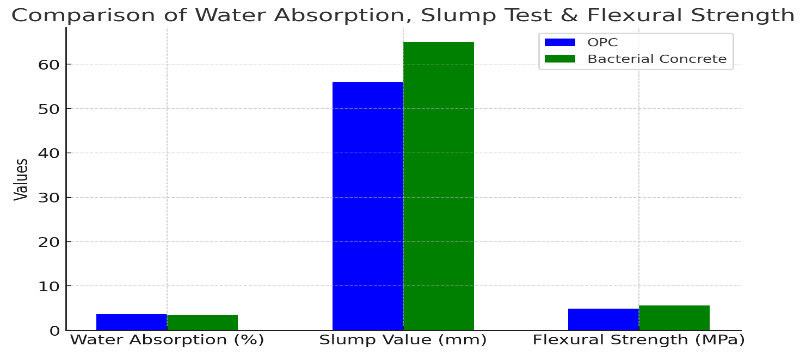
Figure no 1 : comparision of water absorption , slump test & flexural strength
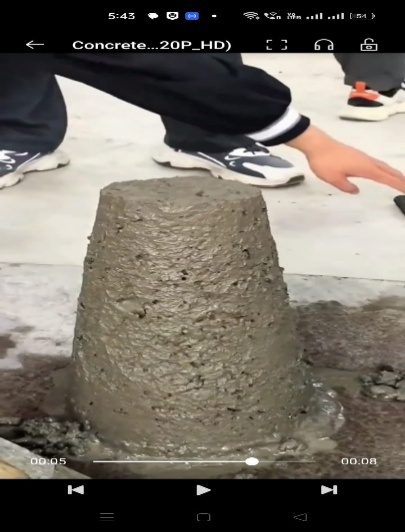
Figure no 2 : Slump Test
The bar chart (figure 1) compares OPC and bacterial concrete in terms of water absorption, slump value, and flexural strength. Key observations as follows . we finds Bacterial concrete absorbs less water (3.44%) compared to OPC (3.79%), indicating better durability. SHC concrete has a higher slump value (65mm vs. 56mm), suggesting better workability. In terms of Flexural Strength SHC shows higher flexural strength (5.64 MPa) compared to OPC (4.87 MPa), Having better resistance to bending forces.
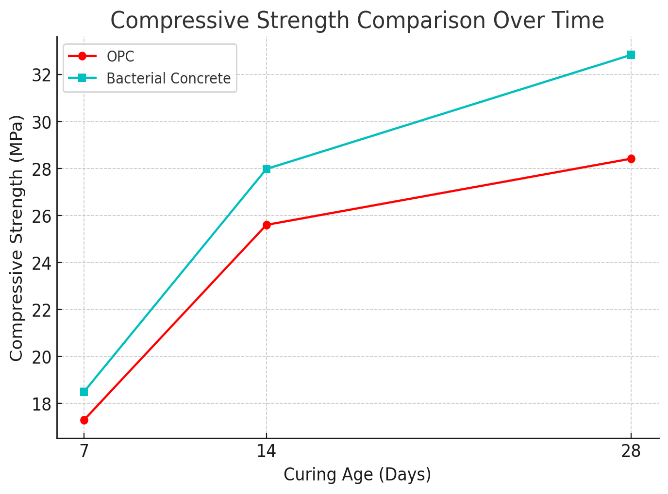
Figure no 3 : compressive Strength over time.
The line graph (figure no 2 ) compares the compressive strength of OPC and bacterial concrete over 7, 14, and 28 days. Key observations noted as follow : At 7 days we finds Bacterial concrete (18.49 MPa) has slightly higher strength than OPC (17.29 MPa). After 14 days SHC concrete (27.98 MPa) continues to perform better than OPC (25.6 MPa). SHC reaches 32.84 MPa, significantly higher than OPC (28.42 MPa) after 28 days .
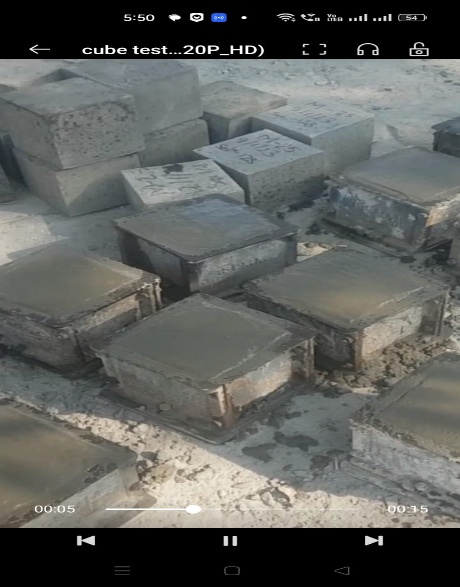
Figure no 4 :Cube Test (150x150x150) mm.
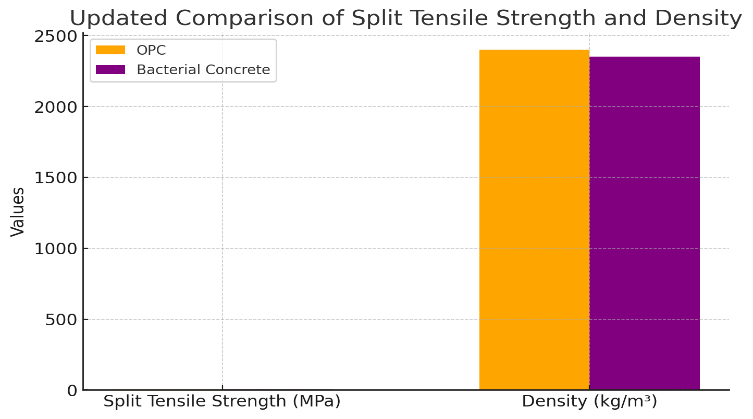
Figure no 5 : Comparison of Split Tensile Strength and Density
In case of Split Tensile Strength Bacterial concrete (3.2 MPa) is higher than OPC (2.8 MPa), indicating better tensile resistance. it has density (2300 kg/m³) is slightly lower than OPC (2400 kg/m³), making it lighter and more suitable for load Carrying structures.
Initial & Final Setting Time
Abhishek kumar while performing test find Bacterial concrete takes longer (40 min) than OPC (30 min) respectively in case of initial setting time , allowing more and better workability. In case of Final Setting Time we finds Bacterial concrete takes longer (720 min vs. 600 min for OPC), which may delay construction but enhances strength development.
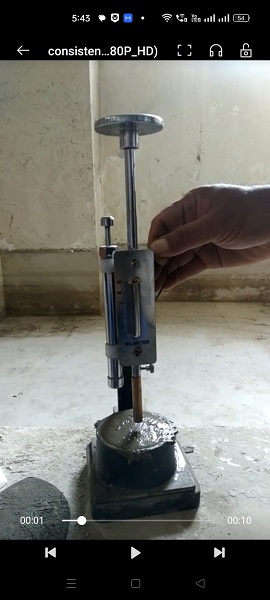
Figure no 6 : Initial & Final Setting Time
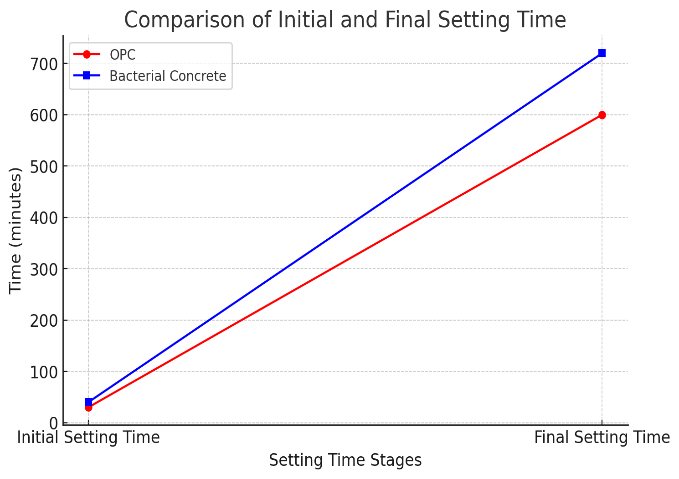
Figure no 7 : comparison of initial and final setting time.
Conclusion
The writer concluded that bacterial concrete is a revolutionary invention in the field of civil engineering, presenting superior mechanical properties and sustainability benefits over conventional OPC. We finds enhanced compressive and flexural strength, reduced water absorption, and improved durability, making SHC a auspicious material for future construction projects. From test and litreture review we concluded that The incorporation of bacteria not only promotes self-healing but also extends life span of Concrete structures by abating maintenance costs and environmental impact. We also finds important advancements in nanotechnology, AI, and IoT. these further improved the efficiency and application of bacterial concrete. Which results in enabling early crack detection and controlled bacterial activation for ideal performance. Writer suggests there are challenges such as high initial costs and large-scale adoption persist, ongoing research should aims to address these limitations by purifying bacterial durability and cost-effectiveness. From field investigations we finds With continuous technological advancements, bacterial concrete has the potential to replace traditional cement in structural applications and buildings , providing long-term economic and environmental benefits. Future studies should be conducted concentrating on large-scale implementation, cost optimization, and enhancing the efficiency of bacterial self-healing mechanisms of self healing concrete to ensure extensive adoption of self healing concrete.
References
[1] Jonkers, H. M., Thijssen, A., Muyzer, G., Copuroglu, O., & Schlangen, E. (2010). Application of bacteria as self-healing agent for the development of sustainable concrete. Ecological Engineering, 36(2), 230–235. https://doi.org/10.1016/j.ecoleng.2008.12.036 [2] Ghosh, P., Mandal, S., Chattopadhyay, B. D., & Pal, S. (2005). Use of microorganism to improve the strength of cement mortar. Cement and Concrete Research, 35(10), 1980–1983. https://doi.org/10.1016/j.cemconres.2005.03.005 [3] Wang, J. Y., Soens, H., Verstraete, W., & De Belie, N. (2014). Self-healing concrete by use of microencapsulated bacterial spores. Cement and Concrete Research, 56, 139–152. https://doi.org/10.1016/j.cemconres.2013.11.009 [4] Luhar, S., & Luhar, I. (2020). A review on the performance evaluation of autonomous self-healing bacterial concrete: Mechanisms, strength, durability, and microstructural properties. Journal of Building Pathology and Rehabilitation, 5(1), 1–14. https://doi.org/10.1007/s41024-020-00077-1 [5] Feng, J., Qian, C., & Niu, D. (2021). Exploring the coupled mechanism of fibers and bacteria on self-healing concrete from bacterial extracellular polymeric substances (EPS). Construction and Building Materials, 270, 121408. https://doi.org/10.1016/j.conbuildmat.2020.121408 [6] Omar, O. (2018). Optimization of the self-healing efficiency of bacterial concrete using impregnation of three different precursors into lightweight aggregate [Master\'s thesis, Louisiana State University]. LSU Digital Commons. https://digitalcommons.lsu.edu/gradschool_theses/4720 [7] Palin, D., Wiktor, V., & Jonkers, H. M. (2016). Autogenous healing of marine exposed concrete: Characterization and quantification through visual crack closure. Cement and Concrete Research, 73, 17–24. https://doi.org/10.1016/j.cemconres.2015.11.013 [8] Nikhil, T. R., Chaitra, D., Prakash, M. R., & Shanthappa, B. C. (2020). A review paper on fire resistance properties of bacteria induced concrete. International Journal of Engineering Research & Technology, 9(6), 1048–1051. https://doi.org/10.17577/IJERTV9IS060848 [9] Kunamineni, V., & Murmu, M. (2020). Experimental study on bacterial concrete using Bacillus subtilis microorganism. In Emerging Trends in Civil Engineering (pp. 35–45). Springer, Singapore. https://doi.org/10.1007/978-981-15-2690-5_4 [10] Mandal, S., & Ghosh, P. (2013). Use of microorganism to improve the strength of cement mortar. Cement and Concrete Research, 35(10), 1980–1983. https://doi.org/10.1016/j.cemconres.2005.03.005
Copyright
Copyright © 2025 Abhishek Kumar, Aadil Manzoor , Angad Preet. This is an open access article distributed under the Creative Commons Attribution License, which permits unrestricted use, distribution, and reproduction in any medium, provided the original work is properly cited.

Download Paper
Paper Id : IJRASET67168
Publish Date : 2025-02-28
ISSN : 2321-9653
Publisher Name : IJRASET
DOI Link : Click Here
 Submit Paper Online
Submit Paper Online

